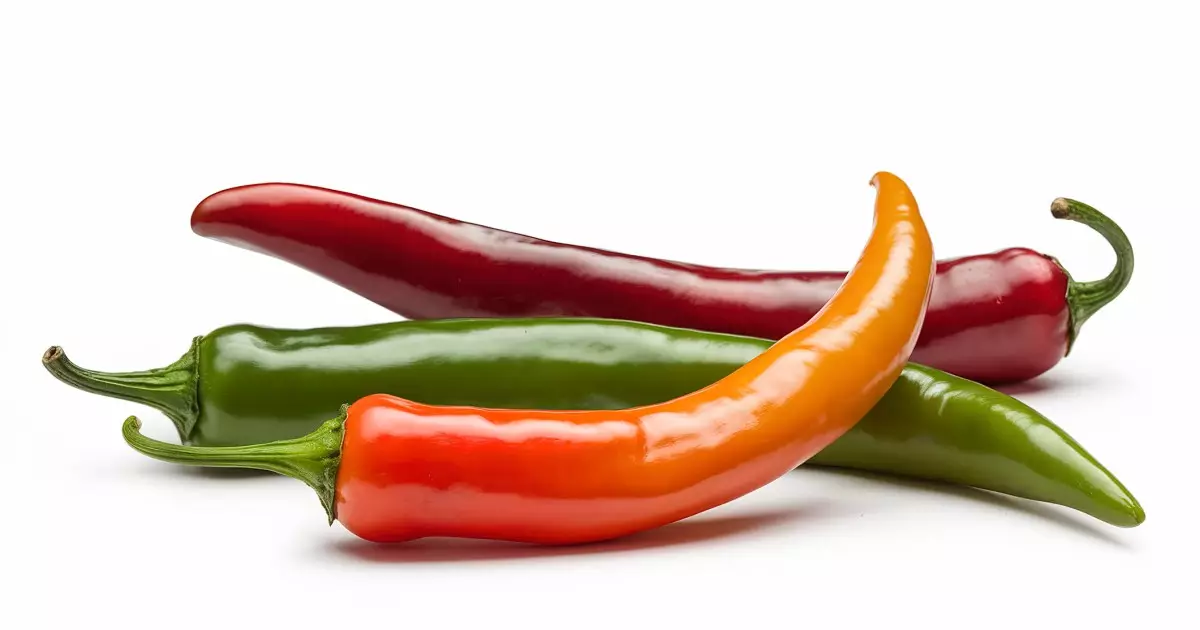When it comes to our four-legged companions, not all human foods are created equal. A question that has surfaced often among pet owners is whether dogs can enjoy the kick of spicy chili peppers. Unfortunately, the answer is a resounding no. Dogs are not equipped to handle the heat that chili peppers deliver. With varieties ranging from the innocuous bell pepper to the fiery habanero, understanding what’s safe for our canine friends is essential for their health and happiness.
Chili peppers, which include jalapeño, cayenne, and habanero, all possess a compound known as capsaicin. This stimulating substance is what makes the peppers feel spicy to us, but for dogs, it can lead to undue distress. While bell peppers fall under the broad umbrella of chili peppers, they’re the odd exception—mild and nutritious, they pose no harm to dogs. However, if your dog gets a hold of a spicy variety, it might not be a pretty picture.
Understanding Capsaicin’s Impact
Capsaicin is problematic for dogs due to its potential to cause gastrointestinal upset. It can irritate their sensitive stomachs and lead to reactions such as excessive drooling, pawing at their mouth, or increased thirst—signs that your dog is experiencing discomfort. Unlike humans, dogs lack the necessary enzymes to process these spicy compounds effectively. The lingering burn of capsaicin might leave them feeling uneasy for hours, especially with potent varieties like habanero that pack a severe punch.
In a fortunate turn, most dogs will not face severe consequences from consuming a pepper or two; the real danger arises when they repeatedly ingest spicy foods. Chronic exposure can lead to more serious gastrointestinal problems down the line, including chronic diarrhea and vomiting. Therefore, it is wise for pet parents to remain vigilant when it comes to what their furry friends can and cannot eat.
Recognizing Reactions and Seeking Help
If your dog accidentally consumes a chili pepper and starts showing signs of discomfort, the best course of action is to remain calm. Provide them with plenty of fresh water to help cleanse their palate and soothe their tongue. Short-term reactions are typically manageable; however, if the discomfort intensifies, or if vomiting or diarrhea occurs, seeking help from a veterinarian is crucial. They can provide specific guidance tailored to your dog’s needs.
Preventative measures make all the difference. Keeping chili peppers and other spicy foods out of reach can save your dog from unnecessary distress. Instead, consider treating them with healthy snacks like bell peppers, which not only offer safety but also pack a nutritional punch beneficial for their overall well-being.
The Importance of Educating Yourself
As a dog owner, being well-versed in what to feed your pet can significantly impact their quality of life. The alluring red hues of chili peppers might tempt you to share, but understanding the consequences helps keep your companion safe and happy. In a world where we often view our pets as family, ensuring their safety should always take precedence over fleeting indulgences. By equipping yourself with knowledge, you can more effectively advocate for your dog’s health and wellbeing, steering clear of spicy pitfalls that might lead to discomfort.

